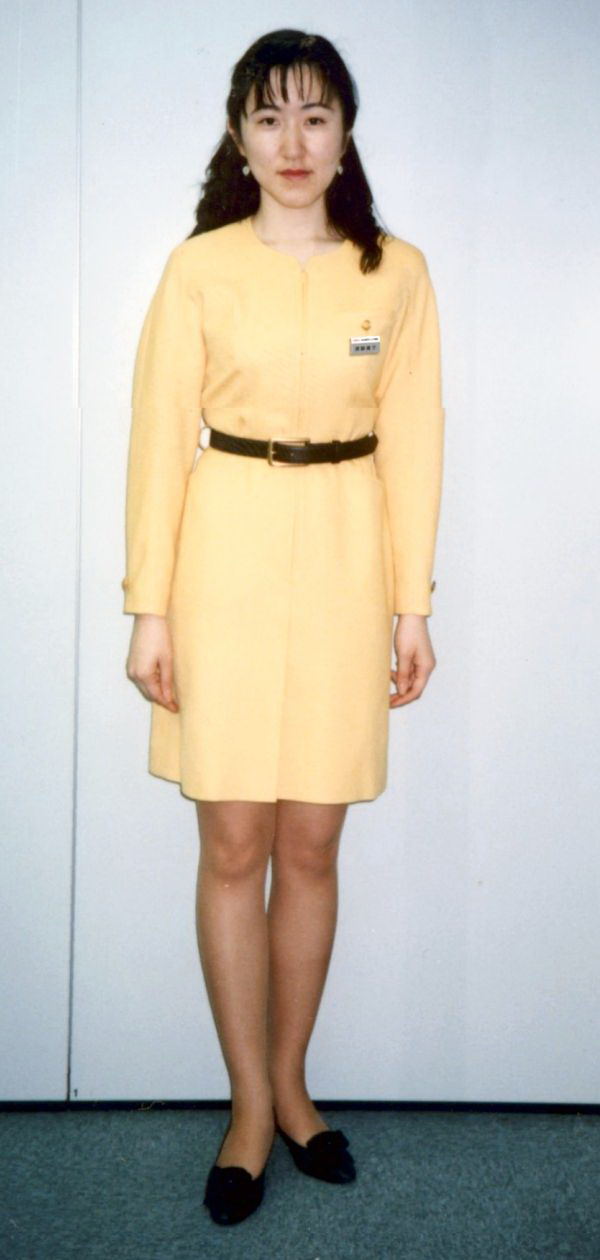|
Constitution Of Laos
The Constitution of Laos specifies the functions and powers of the government of the Lao People's Democratic Republic, and defines the rights and duties of Laotian citizens. The constitution was adopted on August 14, 1991, sixteen years after the 1975 establishment of the Republic, a period during which the country functioned without a written constitution or published penal and criminal codes. It consists of a Preamble and Articles, and legally establishes a set of authorities that resemble the traditional differentiation among executive, legislative, and judicial branches of government. The 1991 constitution is Laos' third. Its first was adopted in 1945 under the Lao Issara (Free Laos) government. Its second — a French-written monarchical constitution — was adopted in 1947, revised in 1957, and abrogated in 1975. Previous constitutions Laos' first constitution was drafted and adopted by the Lao Issara (Free Laos) government on October 12, 1945, containing 41 articles, with ... [...More Info...] [...Related Items...] OR: [Wikipedia] [Google] [Baidu] |
Lao People's Democratic Republic
Laos (, ''Lāo'' )), officially the Lao People's Democratic Republic ( Lao: ສາທາລະນະລັດ ປະຊາທິປະໄຕ ປະຊາຊົນລາວ, French: République démocratique populaire lao), is a socialist state and the only landlocked country in Southeast Asia. At the heart of the Indochinese Peninsula, Laos is bordered by Myanmar and China to the northwest, Vietnam to the east, Cambodia to the southeast, and Thailand to the west and southwest. Its capital and largest city is Vientiane. Present-day Laos traces its historic and cultural identity to Lan Xang, which existed from the 14th century to the 18th century as one of the largest kingdoms in Southeast Asia. Because of its central geographical location in Southeast Asia, the kingdom became a hub for overland trade and became wealthy economically and culturally. After a period of internal conflict, Lan Xang broke into three separate kingdoms: Luang Phrabang, Vientiane and Champasak. In ... [...More Info...] [...Related Items...] OR: [Wikipedia] [Google] [Baidu] |
Vietnam
Vietnam or Viet Nam ( vi, Việt Nam, ), officially the Socialist Republic of Vietnam,., group="n" is a country in Southeast Asia, at the eastern edge of mainland Southeast Asia, with an area of and population of 96 million, making it the world's sixteenth-most populous country. Vietnam borders China to the north, and Laos and Cambodia to the west. It shares maritime borders with Thailand through the Gulf of Thailand, and the Philippines, Indonesia, and Malaysia through the South China Sea. Its capital is Hanoi and its largest city is Ho Chi Minh City (commonly known as Saigon). Vietnam was inhabited by the Paleolithic age, with states established in the first millennium BC on the Red River Delta in modern-day northern Vietnam. The Han dynasty annexed Northern and Central Vietnam under Chinese rule from 111 BC, until the first dynasty emerged in 939. Successive monarchical dynasties absorbed Chinese influences through Confucianism and Buddhism, and expanded ... [...More Info...] [...Related Items...] OR: [Wikipedia] [Google] [Baidu] |
Revolutions Of 1989
The Revolutions of 1989, also known as the Fall of Communism, was a revolutionary wave that resulted in the end of most communist states in the world. Sometimes this revolutionary wave is also called the Fall of Nations or the Autumn of Nations, a play on the term Spring of Nations that is sometimes used to describe the Revolutions of 1848 in Europe. It also led to the eventual breakup of the Soviet Union—the world's largest communist state—and the abandonment of communist regimes in many parts of the world, some of which were violently overthrown. The events, especially the fall of the Soviet Union, drastically altered the world's balance of power, marking the end of the Cold War and the beginning of the post-Cold War era. The earliest recorded protests were started in Kazakhstan, then part of the Soviet Union, in 1986 with the Jeltoqsan, student demonstrations — the last chapter of these revolutions is considered to be in 1993 when Cambodia United Nations Transition ... [...More Info...] [...Related Items...] OR: [Wikipedia] [Google] [Baidu] |
Laotian Parliamentary Election, 1989
Parliamentary elections were held in Laos on 26 March 1989, the first since 1972Dieter Nohlen, Florian Grotz & Christof Hartmann (2001) ''Elections in Asia: A data handbook, Volume II'', p135 and the first since the Communist takeover in 1975. A total of 121 candidates contested the 79 seats. All candidates had to be approved by the Lao Front for National Construction, dominated by the Communist Lao People's Revolutionary Party; around two-thirds of candidates were LPRP members. The LPRP won 65 seats, with independents whose candidacies had been approved by the Front taking the remainder. Inter-Parliamentary Union Voter turnout was reported to be 98.4%. Results References {{Laotian elections |
Politburo Of The Lao People's Revolutionary Party
The Politburo of the Lao People's Revolutionary Party (LPRP) is the highest decision-making organ when the Central Committee is not convened for a plenary session. History The Politburo of the Central Committee was established at the 2nd LPRP National Congress, held on 3–6 February 1972. Seven members were elected to the first Politburo, known as the 2nd Politburo. Of these seven members four concurrently served as members of the 2nd Secretariat. Pany Yathotou became the first woman and first of Hmong ethnicity to be elected to the Politburo (she was elected in 2006 to the 8th Politburo). Women representation on the Politburo increased during the 11th term of the Central Committee, when both Yathotou and Sisay Leudetmounsone were elected to the 11th Politburo. Terms See also * Lao People's Revolutionary Party * Central Committee of the Lao People's Revolutionary Party * Secretariat of the Lao People's Revolutionary Party The Secretariat of the Lao People's Revolutiona ... [...More Info...] [...Related Items...] OR: [Wikipedia] [Google] [Baidu] |
Khmer Rouge
The Khmer Rouge (; ; km, ខ្មែរក្រហម, ; ) is the name that was popularly given to members of the Communist Party of Kampuchea (CPK) and by extension to the regime through which the CPK ruled Cambodia between 1975 and 1979. The name was coined in the 1960s by then Chief of State Norodom Sihanouk to describe his country's heterogeneous, communist-led dissidents, with whom he allied after his 1970 overthrow. The Khmer Rouge army was slowly built up in the jungles of eastern Cambodia during the late 1960s, supported by the North Vietnamese army, the Viet Cong, the Pathet Lao, and the Chinese Communist Party (CCP). Although it originally fought against Sihanouk, the Khmer Rouge changed its position and supported Sihanouk on the advice of the CCP after he was overthrown in a 1970 coup by Lon Nol who established the pro-American Khmer Republic. Despite a massive American bombing campaign (Operation Freedom Deal) against them, the Khmer Rouge won the Cambodian C ... [...More Info...] [...Related Items...] OR: [Wikipedia] [Google] [Baidu] |
People's Republic Of Kampuchea
The People's Republic of Kampuchea (PRK), UNGEGN: , ALA-LC: ; vi, Cộng hòa Nhân dân Campuchia was a partially recognised state in Southeast Asia supported by Vietnam which existed from 1979 to 1989. It was founded in Cambodia by the Kampuchean United Front for National Salvation, a group of Cambodian communists who were dissatisfied with the Khmer Rouge due to its oppressive rule of Cambodia and defected from it after the overthrow of Democratic Kampuchea, Pol Pot's government. Brought about by an invasion from Vietnam, which routed the Khmer Rouge armies, it had Vietnam and the Soviet Union as its main allies. The PRK failed to secure United Nations endorsement due to the diplomatic intervention of China, the United Kingdom, the United States and the ASEAN countries. The Cambodian seat at the United Nations was held by the Coalition Government of Democratic Kampuchea, which was the Khmer Rouge in coalition with two non-communist guerrilla factions. However, the PRK w ... [...More Info...] [...Related Items...] OR: [Wikipedia] [Google] [Baidu] |
Constitution Of Vietnam
The Constitution of the Socialist Republic of Vietnam ( vi, Hiến pháp nước Cộng hòa xã hội chủ nghĩa Việt Nam) is the current constitution of Vietnam, adopted on 28 November 2013 by the Thirteenth National Assembly, and took effect on 1 January 2014. It is the fourth constitution adopted by the Vietnamese government since the political reunification of the country in 1976. Current constitution The current constitution, known as the 2013 Constitution, contains a preamble and 11 chapters: *Chapter I: Political System *Chapter II: Human Rights, Basic Civil Rights and Civic Duties *Chapter III: The Economy, Society, Culture, Education, Science, Technology, and the Environment *Chapter IV: Defence of the Homeland *Chapter V: The National Assembly *Chapter VI: President of the Republic *Chapter VII: The Government *Chapter VIII: The People's Court and the People's Procuracy *Chapter IX: Local Government *Chapter X: The National Electoral Council and the State Audit Off ... [...More Info...] [...Related Items...] OR: [Wikipedia] [Google] [Baidu] |
Standing Committee Of The Supreme People's Assembly Of The Lao People's Democratic Republic
Standing, also referred to as orthostasis, is a position in which the body is held in an ''erect'' ("orthostatic") position and supported only by the feet. Although seemingly static, the body rocks slightly back and forth from the ankle in the sagittal plane. The sagittal plane bisects the body into right and left sides. The sway of quiet standing is often likened to the motion of an inverted pendulum. Standing at attention is a military standing posture, as is stand at ease, but these terms are also used in military-style organisations and in some professions which involve standing, such as modeling. ''At ease'' refers to the classic military position of standing with legs slightly apart, not in as formal or regimented a pose as standing at attention. In modeling, ''model at ease'' refers to the model standing with one leg straight, with the majority of the weight on it, and the other leg tucked over and slightly around. Control Standing posture relies on dynamic rather than st ... [...More Info...] [...Related Items...] OR: [Wikipedia] [Google] [Baidu] |
Lao Issara
The Lao Issara ( lo, ລາວອິດສະລະ ) was an anti-French, nationalist movement formed on 12 October 1945 by Prince Phetsarath. This short-lived movement emerged after the Japanese defeat in World War II and became the government of Laos before the return of the French. It aimed to prevent the French from restoring their control over Laos. The group disbanded in 1949. Japanese puppet state and French resumption of power In 1944, France was liberated and General Charles de Gaulle was brought into power. At the same time, Japanese Empire troops were being largely defeated in the Pacific Front and in a last-minute attempt of trying to draw support, Japan dissolved French control over its Indochinese colonies in March 1945. Large numbers of French officials in Laos were then imprisoned by the Japanese. King Sisavang Vong was also imprisoned and was forced by the Japanese, and with the urging of Prime Minister Prince Phetsarath, into declaring his Kingdom of Lua ... [...More Info...] [...Related Items...] OR: [Wikipedia] [Google] [Baidu] |
Federal Research Division
The Federal Research Division (FRD) is the research and analysis unit of the United States Library of Congress. The Federal Research Division provides directed research and analysis on domestic and international subjects to agencies of the United States government, the District of Columbia, and authorized federal contractors. As expert users of the vast English and foreign-language collections of the Library of Congress, the Division's area and subject specialists employ the resources of the world's largest library and other information sources worldwide to produce impartial and comprehensive studies on a cost-recovery basis. The Federal Research Program is run by the Federal Research Division (FRD), the fee-for-service research and analysis unit within the Library of Congress. The Federal Research Program of the Library of Congress was authorized by the United States Congress in accordance with the Library of Congress Fiscal Operations Improvement Act of 2000 (2 U.S.C. 182c). FR ... [...More Info...] [...Related Items...] OR: [Wikipedia] [Google] [Baidu] |



